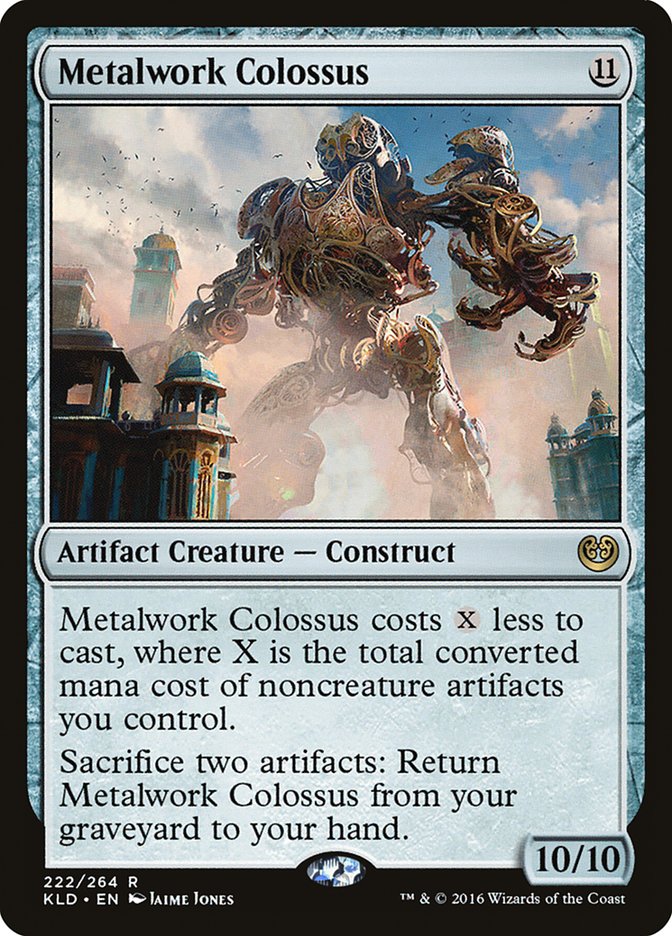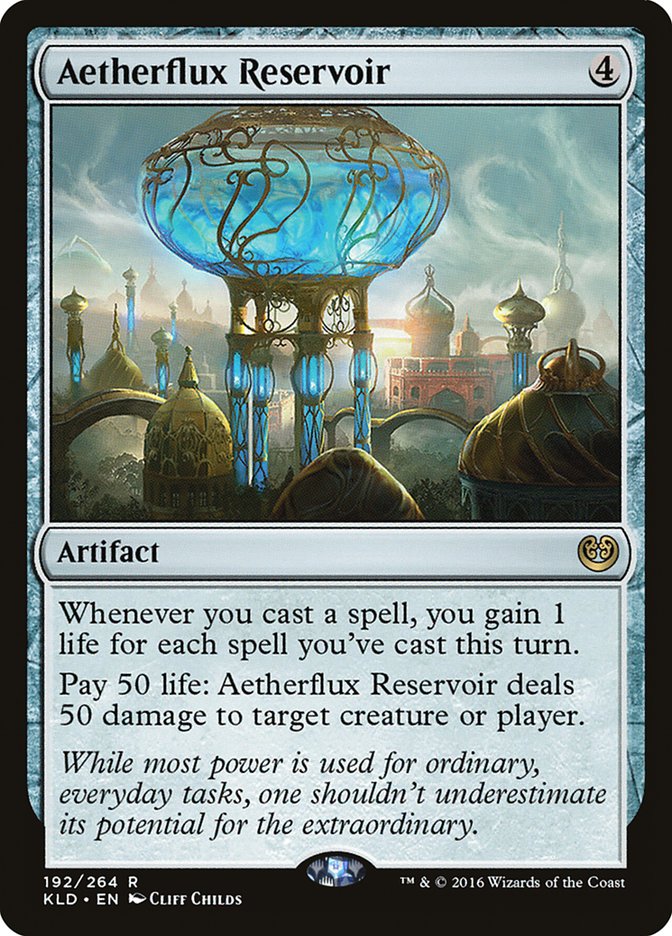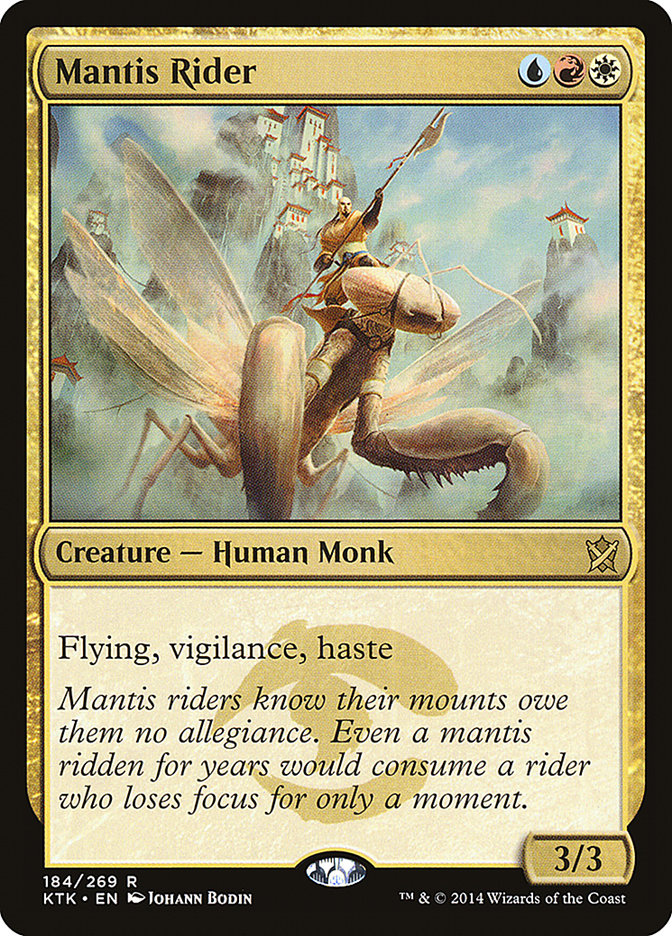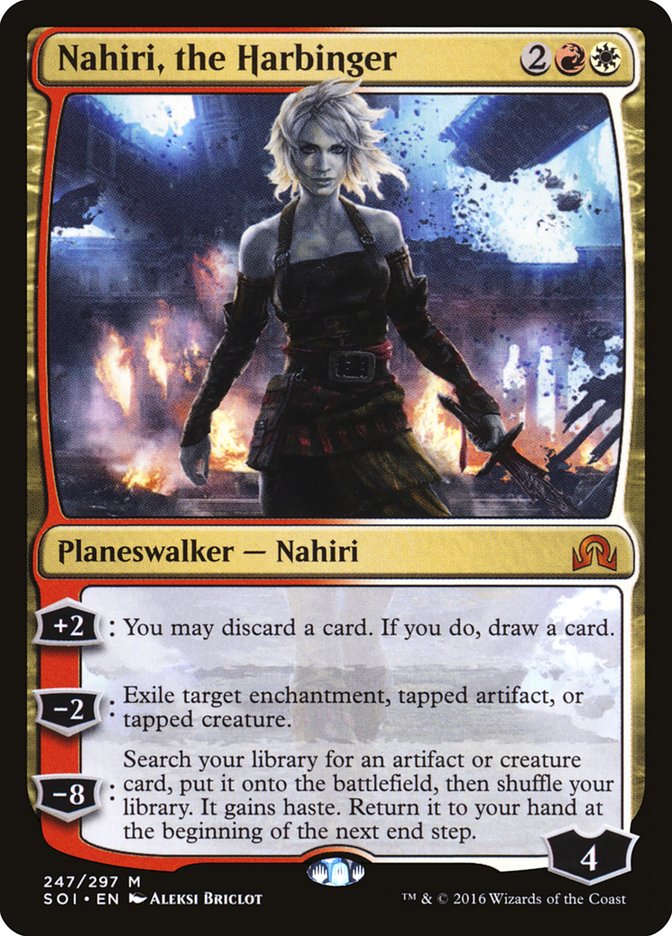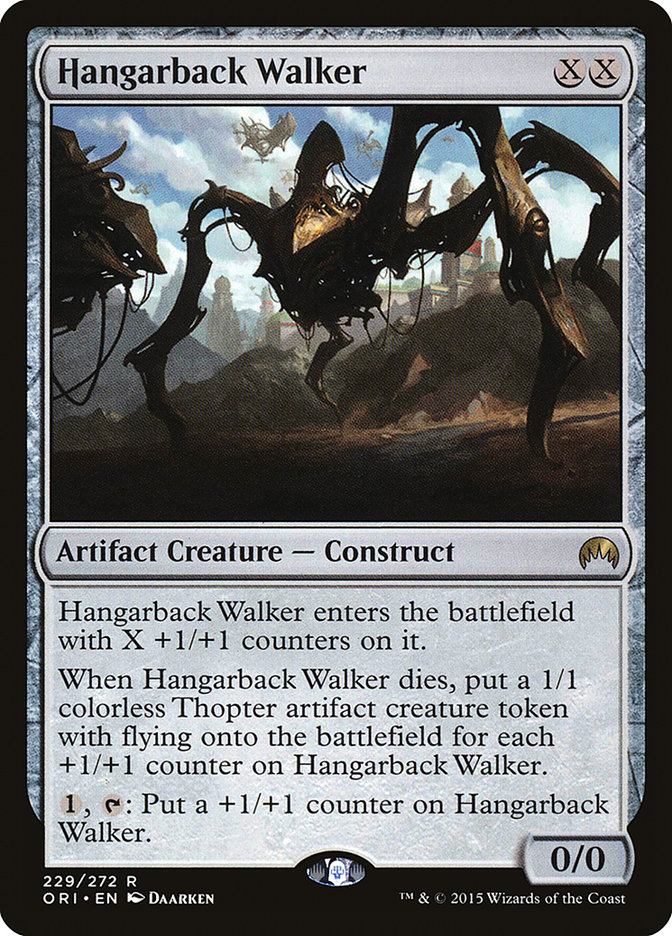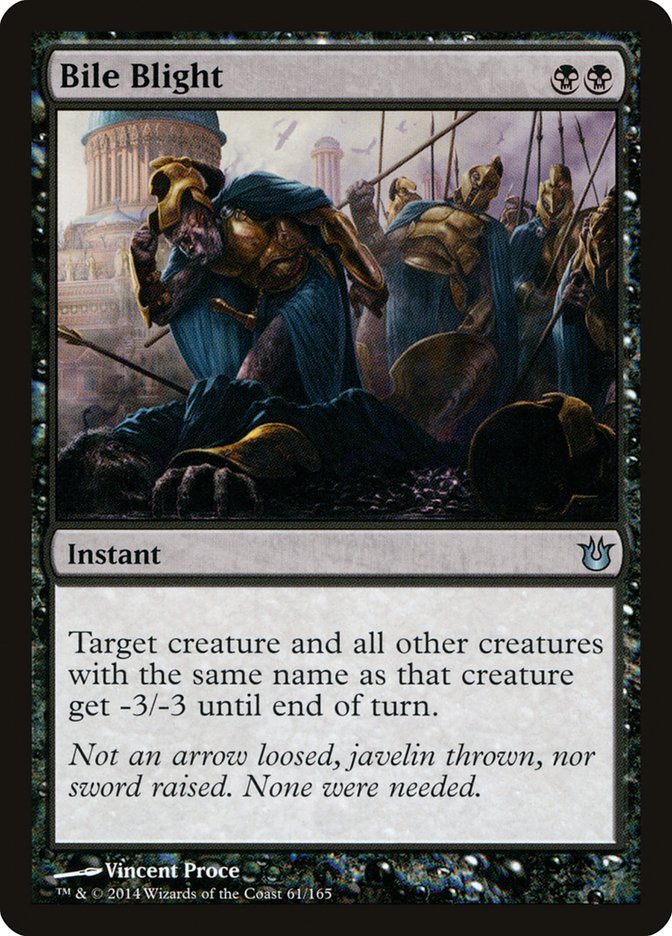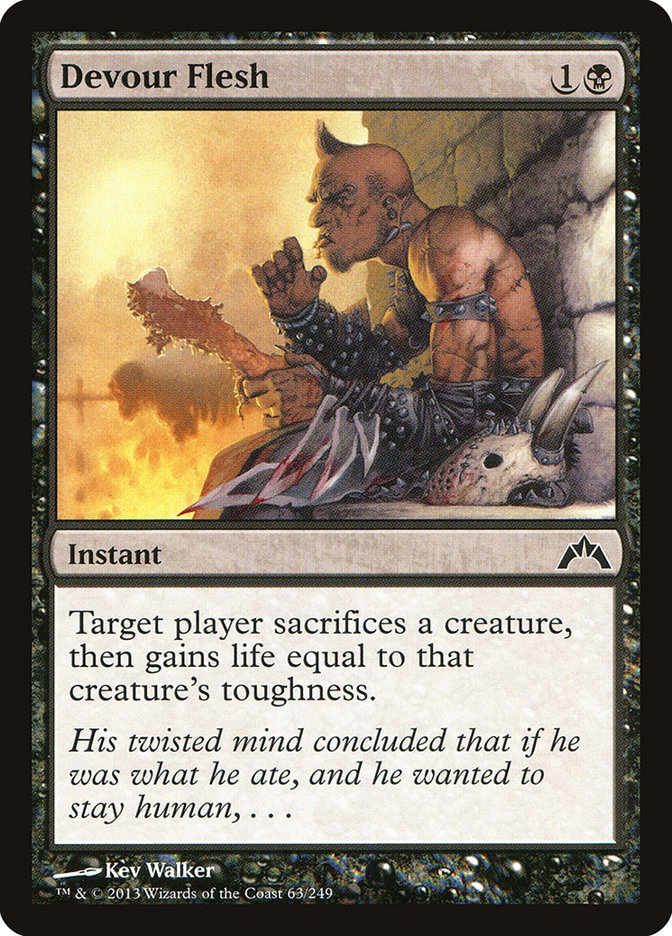Why do you play Magic?
Some live to brew. They spend their days doodling lists on napkins and scouring the internet for hitherto unknown card combinations, always engaged in a never-ending daydream of cool combos and stunning synergies. When it comes to winning, it’s their way or the highway. They desire to surprise their opponents and delight in doing powerful things with underrated cards. For brewers, the true thrill of Magic is in the act of creation. Sooner or later every brew, no matter how successful, will be tossed aside like yesterday’s news and the journey will start anew.
Others find themselves captured by the game within the game: the metagame. They study tournament results like a chess player studies the board, always looking for an opening, a new way to attack. A metagamer will play any deck whatsoever as long as it’s well-positioned. After all, growing attached to a particular deck or strategy is for sentimental fools. They float from deck to deck as the season goes on, their life a continuous stream of matchup percentages and archetype Day 2 conversion rates. Every tournament is one more chance to prove their ability to stay one step ahead of the pack.
Still others focus their energy on finishing what others started. Let brewers do the hard work of identifying the best cards and strategies; the technologist will take it from there and strive towards perfection. A technologist’s happy place is a settled format, playing a tweaked version of the best deck. To get there, these players are always searching for new technology. Whether it’s a spicy one-of or a new sideboard plan, nothing excites a technologist more than an idea to improve a stock deck. No idea is a bad idea, and a good technologist will try anything once. But come tournament time, you can be sure every card the technologist registers has proven itself many times over.
Myself, I play Magic to play.
Nothing fascinates me more than proper sequencing, reads, bluffs, mana efficiency, information concealment, and all-around tight play. In my ideal world, Magic would be played with Wizards of the Coast-designed pre-constructed decks. With no edges to be gained on the registration sheet, Magic would revolve around your ability to play the cards you’re dealt. Obviously, this would make Magic a much worse game overall, but it gives you an idea of what I’m about. Shuffle up and deal! I want to play some cards.
So, what’s the point of all this? Magic is many things to many people, but one thing it’s not is mandatory. We all play this great game by choice, because something unique to Magic drew us in and has yet to let us go. The game is uniquely captivating, and it’s also incredibly vast. In fact, it’s so vast that it’s easy to lose sight of what you love about Magic while chasing competitive mastery. All of these aspects of the game, brewing, metagaming, tinkering, and gameplay, play pivotal roles in high-level play. If your goal in Magic is to be competitive, you cannot afford to neglect any part of the game.
And yet, ignoring the parts of the game you love to improve at parts you enjoy much less is a quick path to burn out. It’s a real catch-22: you either stay in your comfort zone and enjoy your hobby while knowing you are limiting your potential, or you branch out into your weaknesses and try to ignore the call of the sea. Just like Moana, we need to know who we are. But it’s possible to embrace our unique identities as Magic players without neglecting the rest of the game. The key is to approach each game aspect through the lens of what you love.
Let’s begin.
Play-Based Brewing
My love is playing games of Magic. Brewing new decks is about as far from playing actual games as you can get! Even so, I’ve been known to brew a deck every now and then. Some of them are even good…
Creatures (12)
Planeswalkers (4)
Lands (24)
Spells (20)
Sideboard

Remember Mantis Rider? Jeskai Tempo ended up being a major player in Khans of Tarkir Standard, but for that StarCityGames.com Open in New Jersey, it was a brew. And a particularly unrefined brew at that! Seriously, what are those copies of Titan’s Strength doing in there? Despite its flaws, this deck was good enough to land me a Top 8 in a brand new Standard format. And I created it by approaching the art of brewing through the lens of Magic gameplay.
Every brew has a seed, the kernel of an idea that everything else falls into place around. For a play specialist like me, that seed is a play pattern rather than a combo or synergy. For this deck, the seed was the idea of classic Delver of Secrets-style play, with Mantis Rider playing the starring role of the efficient threat. The deck was designed to stick a threat and ride it to victory, with plenty of disruptive elements like Jeskai Charm and Gods Willing to ensure we make it to the finish line. Working on brewing a deck to emulate a desired style of play engaged me in the same way that that thinking about lines of play does, allowing me to maintain a high level of investment throughout the process. All work is easier when you are truly interested in it, and Magic work is no exception.
Don’t get the impression that there’s only one way to brew as a gameplay fanatic. To the contrary, every fundamental piece of Magic is rich enough to serve as a multifaceted lens, providing multiple ways to approach every other aspect. For the brand new Shadows over Innistrad Standard format on display at the StarCityGames.com Baltimore Open, my brew utilized the lens of gameplay in a completely different way.
For this tournament, the goal of my brew was to explore a theory. In my initial testing, the card Nahiri, the Harbinger stood out as being much more powerful than I had anticipated. This disparity between my expectations and my experience drew my attention to the numbers, specifically to how the size of the loyalty numbers on a planeswalker influenced its strength. Narset Transcendent had previously been disappointing despite being a four-mana planeswalker with a high starting loyalty, but Narset’s plus ability only gains one loyalty counter. Nahiri’s plus ability bestows two additional loyalty counters, a fact that was starting to look to me like a game-changer.
Creatures (19)
- 1 Elvish Visionary
- 2 Dragonlord Atarka
- 3 Nissa, Vastwood Seer
- 1 Linvala, the Preserver
- 4 Sylvan Advocate
- 4 Archangel Avacyn
- 4 Tireless Tracker
Planeswalkers (4)
Lands (26)
Spells (11)

So I brewed around Nahiri, the Harbinger with the intention of learning as much as I could about just how strong a plus-two ability on a four-mana planeswalker with four starting loyalty could be. The seed of my brew was Nahri herself and a desire to explore the impact of high loyalty numbers on common play patterns.
My experiment was successful and I hit upon the core of the Naya Midrange deck that would go on to win Grand Prix Tokyo in the hands of Riku Kumagai. Not that my initial deck was particularly good, but it got me to Day 2 and enthralled me enough to keep me playing Nahri for several months. A profitable foray into the realm of brewing, and only possible because I approached brewing as an opportunity to explore things that interested me and not as an unappealing chore.
Play-Based Metagaming
Brewing around play patterns instead of interactions is one thing, but how can we approach metagaming from the world of in-game play?
Creatures (16)
Planeswalkers (8)
Lands (25)
Spells (11)

Pro Tour Shadows over Innistrad was won by Steve Rubin, who wielded the known quantity G/W Tokens. The deck had put up great results in the preceding SCG Tour events and could not be considered particularly innovative. And yet I would argue that Rubin successfully leveled the field with a stunning metagame call. What gives?
The story of Pro Tour Shadows over Innistrad was that of a field prepared for the twin boogeymen of Bant Company and G/W Tokens. Multiple brand-new controlling strategies designed to punish the expected field rose to the top of the pack and reached the single-elimination rounds. Their pilots metagamed for the tournament in the traditional sense.
What Rubin did was something else entirely.
The greatest weapon in the G/W Tokens arsenal for the expected deluge of midrange creature decks was transforming Archangel Avacyn into Avacyn, the Purifier. Enabling that transformation was often a bit of a problem for the deck, however. Outside of the four copies of Dromoka’s Command, transforming Avacyn relied on the opponent cooperating. On the Pro Tour stage, that’s not something you want to count on. But watch a few of Rubin’s matches from that Pro Tour and you will see him consistently flip Archangel Avacyn via the cute trick of casting Hangarback Walker with X=0.
For many players, the Hangarback Walker / Avacyn interaction was just that: a cute trick. They were aware of it and would utilize it when the opportunity presented itself, but nothing more. Rubin took it a step further. Aware of the importance of transforming Avacyn in many matchups, part of Rubin’s strategy involved refusing to cast Hangarback Walkers early to save them to transform Avacyn. The Bant Company matchup in particular featured battlefield stalls so extreme that a Hangarback Walker on the battlefield was virtually useless, while one in the hand waiting for a friendly Avacyn was pure gold. Rubin’s in-game strategy was genius, and his dedication to it allowed him to successfully metagame the field while still playing the format’s best deck.
What a master.
Play-Based Technology
And now for the story of one of my greatest Magic successes to date: Grand Prix Chicago 2014, a tournament so successful, I got to write my first-ever article. I played one of that Standard format’s best decks, Mono-Black Devotion. My list wasn’t particularly innovative, aside from one key point: I cut Devour Flesh, which was commonly held up as a darling of the deck. Instead, I maxed out on Bile Blight. I attribute all my success that tournament to that minor piece of technology.
Creatures (16)
Lands (26)
Spells (18)
- 4 Thoughtseize
- 4 Underworld Connections
- 1 Ultimate Price
- 4 Hero's Downfall
- 1 Whip of Erebos
- 4 Bile Blight
Sideboard

Finding that technology was an exercise in exploring play patterns. I played more matches with Mono-Black Devotion than I have played with any other deck before or after, and I started to excel at turning the corner and racing with it. Commonly held wisdom at the time held that Mono-Black Devotion was a midrange control strategy, but I began to consider it closer to a midrange aggro deck. I was winning games with Mono-Black Devotion that felt completely unwinnable, and I was doing it by being more aggressive than nearly any other pilot.
Discovering that I favored taking aggressive lines with the deck led naturally to my modest contribution to the deck’s technology. Devour Flesh’s lifegain was a negligible cost when the deck was taking a controlling role, but a huge burden when trying to kill the opponent in an efficient manner. Similarly, Bile Blight had the downside of being weak later in the game, but the play patterns I tended to fall into meant that my games did not last as long as those of other pilots.
Most decks in Standard these days are similarly flexible and can be piloted in multiple valid ways. We all have a playstyle we are most comfortable with, general tendencies that influence how we pilot every deck we touch. Taking the time to understand the ways your style with a deck differs from the norm will allow your search for good technology to be much more fruitful. If you tend to take games down controlling paths, trimming the low-impact early creatures in your midrange decks for additional removal spells makes a lot of sense. Your best Magic will always occur when your technology and your playstyle are in perfect harmony.
Not many people share my love for the pure gameplay of Magic. Deckbuilding and tuning is what most Magic players enjoy the most, and that often leaves me on the outside looking in. Thousands of words are published every day about what decks are best in the current metagame or how best to build decks around newly spoiled cards. Far fewer words are written about how to best play the cards we register. In fact, I’d go as far as to say that there is a pure gameplay-sized hole in the world of Magic content. But gameplay is not isolated from the deck registration sheet; it’s as vital to it as last week’s tournament results or a true mirror-breaking sideboard plan. The vibrant world of how to best use detailed gameplay knowledge like mulligan theory or matchup dynamics to influence our deck selection and card choices remains virtually unexplored.
Ultimately, a commitment to focus on the in-game play of Magic is simply a dedication to knowing more than your opponents. You aren’t trying to surprise your opponent, to catch them off-guard with an unexpected deck or card choice. You don’t rely on their lack of knowledge. Instead, you are seeking to understand each game you play on a deeper level than your opponent does. Magic to me is a continuous journey of learning and discovery, a desperate search for unknown knowledge. It is a voyage of pure exploration, and I wouldn’t have it any other way.
Join me, won’t you?


